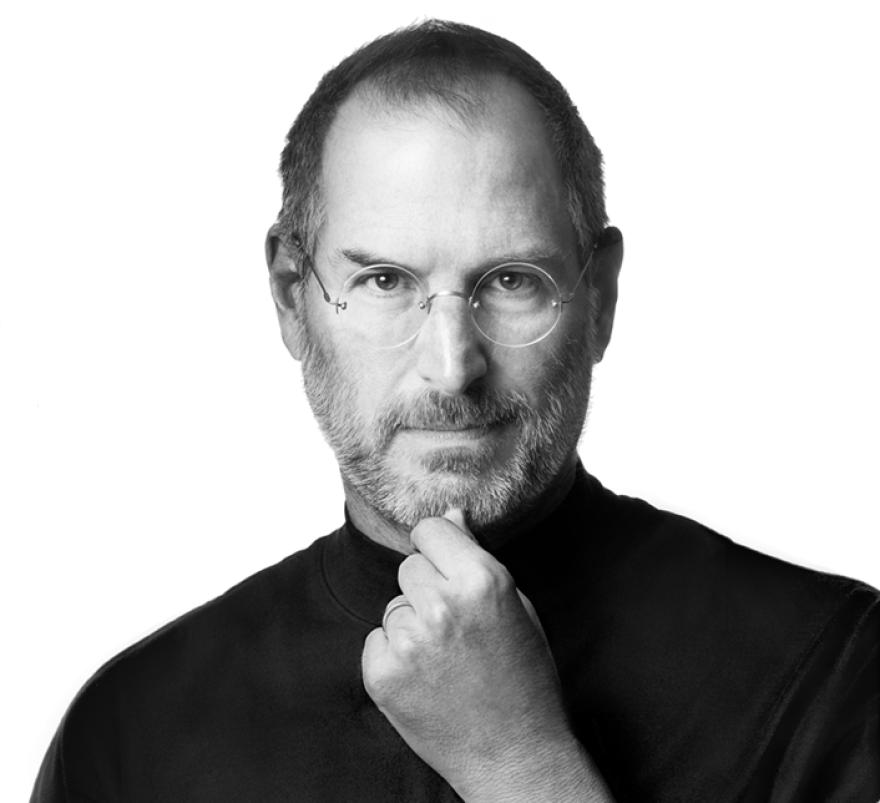Austin resident Andrew Heller has worked in the technology industry for decades, and was personal friends with Steve Jobs. Heller says Steve visited Austin occasionally. Heller also spent many years in California.
KUT News caught up with Heller and asked him about his late friend.
KUT News: First of all Mr. Heller, our condolences.
Andrew Heller: I think we all were hoping that we’d get one more Christmas with Steve. I wanted to get my son out to see him again. My youngest is named after Steve.
KUT News: What was your relationship with Steve Jobs?
Heller: I was at IBM and ran the independent business unit that created the RS/6000 Power PC, and I had known Steve since I was in high school in Cupertino. I had a house in Cupertino when I was working out on the West Coast for IBM. That was where we first met, at a [computer] home build group before Apple.
He and I stayed in communication and I was the one who negotiated the deal between NeXT and IBM that sent a lot of money to Steve and sent his interface from NeXT to AIX, so we had been negotiating and working together.
He had also been very helpful to me when I was in the process of adopting my son.
KUT News: Right, you named your son Steve after Steve Jobs. Of course, Steve Jobs was adopted himself. How did he help you through that experience?
Heller: At that time, I had moved from California down to Texas to run an organization here. I was going through an adoption agency in Houston. The people would come to our house and ask the same question again and again.
There were times I would get so frustrated with them that I would call Steve. He would listen very patiently to my frustration, calm me down, pick up the phone again call his father, and get a story of what happened in the 50's when he was being adopted. What happened to his parents was much worse than what was happening to us.
He would call me up and tell me the story his father had told him of what went on when he was being adopted. Each time he would get a story that was much more painful than what we were going through that his parents had to go through. He used those to calm me down and keep from trying to strangle the people that were coming to our house from the agency.
When our son was born, we moved back to California shortly afterwards. When Steven [my son] turned one, we were back up and moved from Austin to Los Gatos. Steve would come and visit our son, or we would go up and visit him.
He became very, very interested not just in our son but with children in general. He started spending weekends with [Jobs’ daughter] Lisa, whom I don’t think he had really seen very much until she was eight or nine. And then he decided he wanted to have a family. It became a very important thing in his life.
He would come over to Los Gatos and play with [our] baby. Or we would go to dinner - we were working on a number of projects together when he was at NeXT – I’d go over to his house in Portola Valley, bring the baby and my wife.
After dinner, Steve and I and the baby would sit under the Bösendorfer[grand piano]. When Steve bought the Bösendorfer for Apple, he bought one for himself. So he had two of these nine-foot grands. He would play with the baby under the Bösendorfer when we were working.
There was a side of him that people didn’t see.
KUT News: What is that side that you saw that wasn’t public.
Heller: The whole thing with the way he deals with children. First of all, his curiosity was the curiosity of a child. I have that. He has that. There are certain people in technology who never grow out of being 3-year-olds in terms of being intrigued by things.
Steve was intrigued by things, but he had a unique capability to look at something from 50,000 feet, and then go examine it under a microscope and see the two extremes. This evolved over time, but it became more and more prevalent as he got older.
If you look at his products, the attention to details, his ability to put things together differently than anyone had envisioned. Steve was the guy who could see three different technologies and put them together in a way that so enjoyable for people to use it that it created a whole new perception of the technology.
He wasn’t a technologist. He saw a vision of the end and then got involved in every detail of how to present that.
KUT News: Mr. Heller, thank you for being so generous with your time.
Heller: We’ve lost something very, very special. Not something that we will find repeated often.


